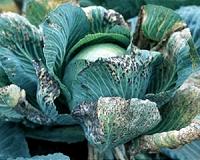 |
Sydney (AFP) Dec 20, 2010 Buying sheep and cattle in Australia used to be a tough business -- drovers would herd livestock thousands of kilometres across the hot and remote Outback for auction. Now ranchers can buy a herd with just a few clicks of a mouse from the comfort of a tractor cab. Some farmers faced a three to five day trip to buy sheep -- "now they do it in the hour," said Gary Dick, general manager of livestock sale site AuctionsPlus. With just a few clicks, buyers around Australia, even farmers working in their fields, can bid on animals and have them transported across the vast country thanks to online trading. "You can buy stock from your office desk over your computer, which gives you another dimension in your supply," long-time user Steve Sinclair, head of Sinclair Meats, told AFP. Buying sheep remotely is not just an unusual version of online shopping, which is now widespread in Australia. It pre-dates the craze by decades, before the dawn of the Internet age. As early as 1987, Australian farmers were dialing into AuctionsPlus using a single phone number and a modem, and placing bids on rudimentary "green-screen" computers, making them unlikely tech pioneers. But back then, buyers only had access to data written in catalogue form and assessors had to go out and view the animals before loading the information into the computer. Now, buyers can see the animals on video. And most often the buyer would have had to go to the local stock agent to use their computer because they lacked a suitable connection on their property. "There was actually no cost saving because they used to have to get in the car -- probably go and have a shower -- and drive into town," Dick said. "So now they have a laptop sitting on the header (combine harvester) -- pull up for half an hour to see whether they've bought it -- and then they are back to work again." The innovation, driven by the sheer logistical challenge of moving stock to remote cattle markets, has now morphed into a sophisticated website (www.auctionsplus.com.au) with 45,000 registered users. "AuctionsPlus ends the days of travelling thousands of miles, just to return empty-handed. It also helps with disease control because stock move straight from the buyer to the seller," said Dick. Last year AuctionsPlus handled the sale of 2.2 million sheep and 167,000 cattle to customers in Australia and overseas, who bought after browsing the website to access livestock photos and videos, pricing information and market advice. Professor Shirley Gregor, from the Australian National University's School of Business and Information Management, said AuctionsPlus's decision to pursue an e-commerce model was visionary. "Some thought it was a bit early for its time. You sometimes run into trouble if you're the leading-edge innovator," Gregor said. "If there's not a critical mass of people online to use it ... then it won't work properly." E-commerce expert Ahmed Imran said AuctionsPlus was at the forefront of a trend which currently only accounts for 3.0 percent of the retail market, but which was seeing a "second wave" driven by quicker Internet speeds and smartphones. "Australia didn't begin using e-commerce that long ago. Australia is a follower rather than a leader in this field," said Imran, from the Australian National University. According to technology analyst Paul Budde, about 25 percent of Australian mobile owners are now using their phones to shop online. "Generation Y in particular is living life in a digital society in which mobile devices will be the primary communication tool by 2020," said Imran. "Talk about 'e-commerce' will be irrelevant in future. It will just be commerce," he added. For sheep customers like Sinclair, electronic auctions have long been a normal and useful way of buying stock, especially during times of scant supply. "Through the tough period where there's not a lot of stock about it's pretty handy to have access to (AuctionsPlus) because it's covering Australia-wide, from Tasmania to Queensland," said Sinclair.
Share This Article With Planet Earth
Related Links Farming Today - Suppliers and Technology
 Report: Humanity 'pushing' plant resources
Report: Humanity 'pushing' plant resourcesGreenbelt, Md. (UPI) Dec 16, 2010 Humanity is pushing the Earth's plant resources harder as population continues to grow and countries develop modern economies, a NASA report says. A NASA research group says an increasing amount of Earth's total annual land plant production is being consumed, mainly for food but also for paper, clothing, livestock feed, firewood, biofuels and other uses, ScienceDaily.com reported Thursd ... read more |
|
| The content herein, unless otherwise known to be public domain, are Copyright 1995-2010 - SpaceDaily. AFP and UPI Wire Stories are copyright Agence France-Presse and United Press International. ESA Portal Reports are copyright European Space Agency. All NASA sourced material is public domain. Additional copyrights may apply in whole or part to other bona fide parties. Advertising does not imply endorsement,agreement or approval of any opinions, statements or information provided by SpaceDaily on any Web page published or hosted by SpaceDaily. Privacy Statement |